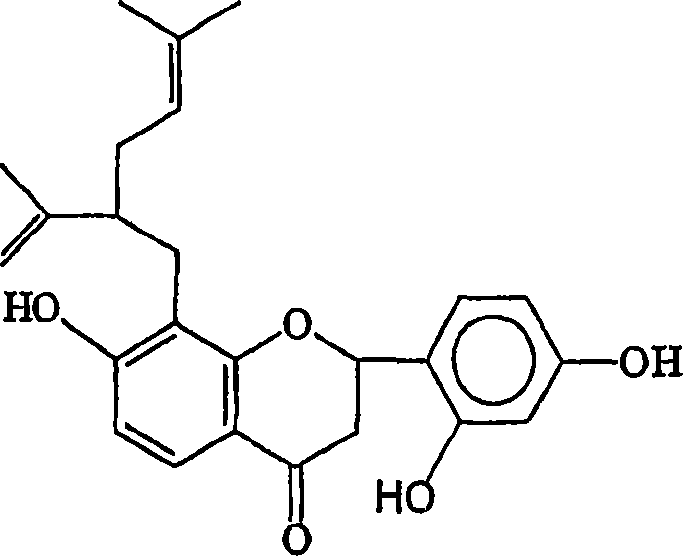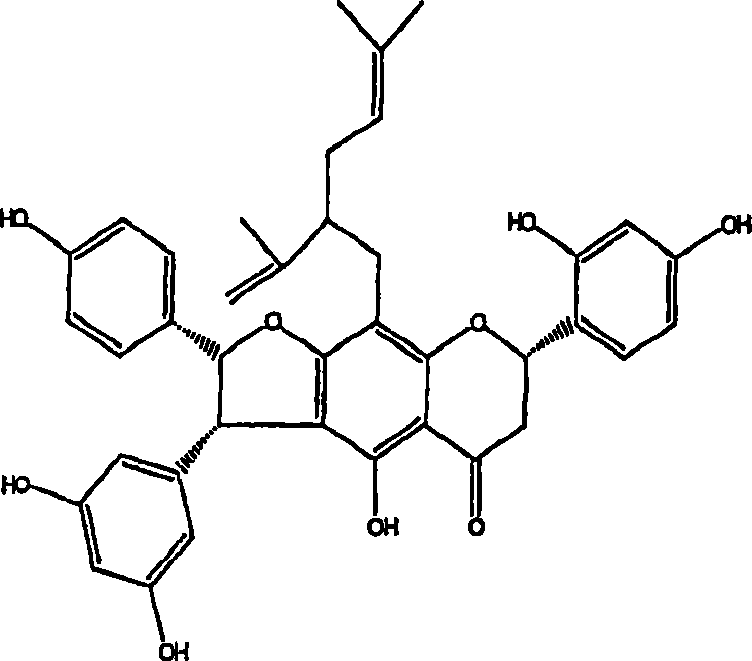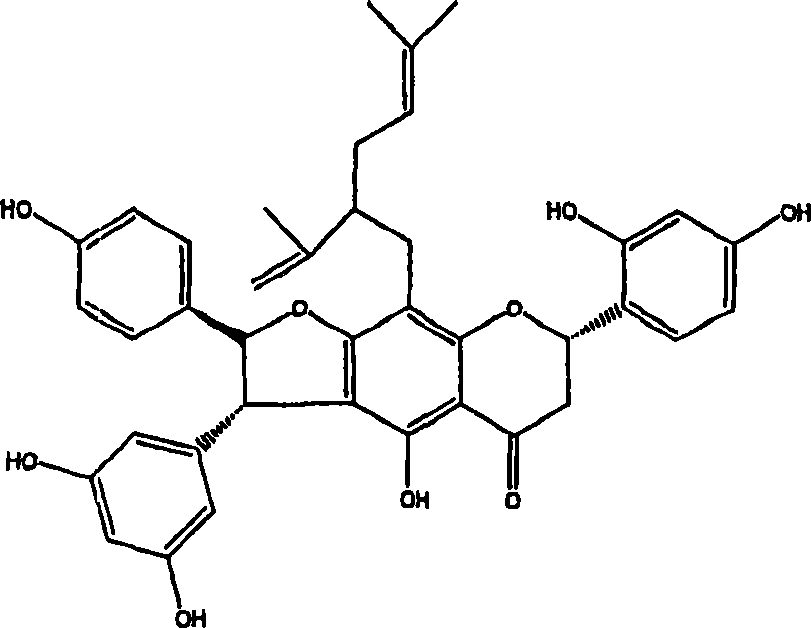Cosmetic compositions containing sophora alopecuroides l. extracts
A composition and extract technology, applied in other skin fields of solvent extracts, can solve the problems of low efficacy side effects, toxic skin, irritation, etc., and achieve the effect of low cost and high effect
- Summary
- Abstract
- Description
- Claims
- Application Information
AI Technical Summary
Problems solved by technology
Method used
Image
Examples
Embodiment 1
[0072] This example illustrates the in vitro tyrosinase inhibitory activity of the Sophora alopecia plant extract of the present invention.
[0073] Raw roots collected in Dingbian County, Shaanxi Province, China through Xinzheng (Xinzheng, a local institution dealing in raw materials for traditional Chinese medicine) were used.
[0074] The extract of Sophora sophora used in the following examples was prepared according to the method described above, ie a concentrated extract.
[0075] method
[0076] MelanoDerm tissue model method:
[0077] Using the MelanoDerm tissue equivalent model (MatTek TM MEL-300). MelanoDerm cultured according to supplier requirements.
[0078] The medium was replaced every two days for 14 days, and the treatment consisted of adding natural extracts to the medium phase at a final concentration of 50-100 μg / ml. A positive control group was used, namely kojic acid and hydroquinone, which are known skin lightening agents. During each change of ...
Embodiment 2
[0088] A concentrated extract of Sophora alopecuroides was analyzed by mass spectrometry and NMR spectroscopy to identify the following compounds as described below:
[0089] 1: Sophoraflavone I
[0090] 2: Bitterone B
[0091] 3: Bitudinone A
[0092] 4: Sophoraflavone G
[0093] 5: Sophoraflavone K
[0094] 1: Sophoraflavone I (KGC-I)
[0095]
[0096] 2. Bitterone B
[0097]
[0098] 3. Bitterone A
[0099]
[0100] 4. Sophoraflavone G
[0101]
[0102] 5. Sophoraflavone K
[0103]
Embodiment 3
[0105] Cosmetic compositions within the scope of the present invention are prepared.
[0106] The base formulation in Table 3 was prepared by heating the Phase A components to 70-85°C with stirring. In a separate vessel heat the Phase B components to 70-85°C with stirring. Phase A was then added to Phase B with both phases maintained at 70-85°C. The mixture was stirred at 70-85°C for at least 15 minutes and then cooled.
[0107] table 3
[0108]
[0109] * BAL means margin.
PUM
 Login to View More
Login to View More Abstract
Description
Claims
Application Information
 Login to View More
Login to View More - R&D Engineer
- R&D Manager
- IP Professional
- Industry Leading Data Capabilities
- Powerful AI technology
- Patent DNA Extraction
Browse by: Latest US Patents, China's latest patents, Technical Efficacy Thesaurus, Application Domain, Technology Topic, Popular Technical Reports.
© 2024 PatSnap. All rights reserved.Legal|Privacy policy|Modern Slavery Act Transparency Statement|Sitemap|About US| Contact US: help@patsnap.com










